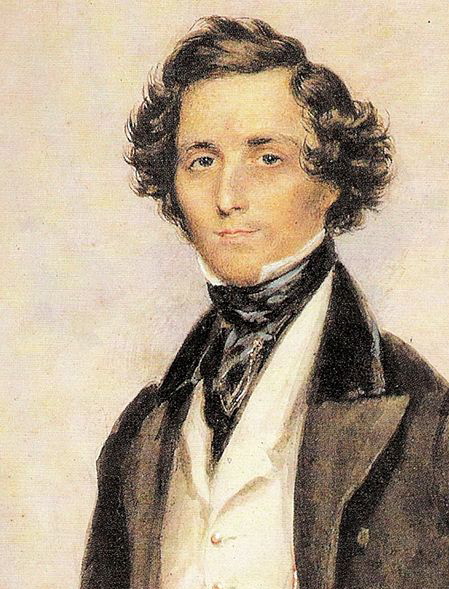The recent concert of the Handel and Haydn Society at USM-Portland had as its theme “Mendelssohn’s Library,” based on the manuscripts and printed scores in his personal collection.
The works included a Handel Concerto Grosso, the Bach Concerto for 2 Violins, Strings and Continuo in D Minor, and a Sinfonia in B Flat Major by Carl Philipp Emanuel Bach, as well as Mendelssohn’s own Concerto for Violin and String Orchestra in D Minor, written when he was 13.
One can assume that Mendelssohn knew and played or conducted these works, simply because of the difficulty and expense of acquiring musical scores in the early part of the 19th century. One had to be well-off, as Mendelssohn’s family was, not only to have the leisure to devote to music but also the money to buy it.
The printing of music began shortly after Gutenberg invented improved movable type in the 15th century, but it remained an arduous process until the advent of the computer. There are obvious difficulties in setting musical scores from movable type, and reproduction of complex music had to await the use of engraving, which made it easier to print clean versions of works on multiple staves.
Both Bach and Telemann engraved some of their own music, and, in the Colonies, Paul Revere was one of the first music engravers in the decade prior to the Revolution.
Mendelssohn owned both engraved scores and manuscript versions, original or copied by hand. I haven’t been able to find out if he also had scores produced by lithography – invented in 1796 – but it seems likely. He was influenced by Carl Maria von Weber’s “Oberon,” (1826) and Weber had learned the process of lithography from its inventor, so that he could reproduce his own work.
Mendelssohn died in 1847 and it was just three years later that the combination of engraved plates with lithography and the high-speed printing press opened the floodgates of sheet music to everyone.
I am not sure that he would have approved, even though he advocated in Germany for the wider distribution of Handel’s works in authentic editions. Incidentally, it is a myth that Mendelssohn “rediscovered” Bach. He did revive larger works, such as the St. Matthew Passion, but the “Well-Tempered Clavier,” and other less grandiose compositions were standard fare among both amateur and professional musicians of the time.
Mendelssohn was anything but an elitist. In a letter to a friend, printed in a collection called “Composers on Music,” he writes a scathing criticism of “scholarly” music, but as the son of a noted philosopher, he was certainly aware of the downward tendency inherent in mass production. Among the first uses of the new printing technique was the wide distribution of songs from the immensely popular minstrel shows of the United States.
Another effect was widespread pirating. One of my treasured possessions is a smudgy edition of Scriabin piano music, completely unmarked, bought in a second-hand shop in Philadelphia for 50 cents.
Today, anyone with a computer can download virtually any piece of music as a printed score. The old ways survive, however. Music is still printed with movable type, in letterpress. And composers, a few at least, still write their scores by hand and have them printed as facsimiles. The other night the DaPonte String Quartet played George Crumb’s “Dark Angels” from oversize facsimile scores that were works of art in themselves.
Maybe we should all take a leaf from Jimmy Carter and correspond only by means of hand-written letters. Otherwise what source materials will our biographers use?
Christopher Hyde is a writer and musician who lives in Pownal, He can be reached at:classbeat@netscape.net
Send questions/comments to the editors.



Success. Please wait for the page to reload. If the page does not reload within 5 seconds, please refresh the page.
Enter your email and password to access comments.
Hi, to comment on stories you must . This profile is in addition to your subscription and website login.
Already have a commenting profile? .
Invalid username/password.
Please check your email to confirm and complete your registration.
Only subscribers are eligible to post comments. Please subscribe or login first for digital access. Here’s why.
Use the form below to reset your password. When you've submitted your account email, we will send an email with a reset code.